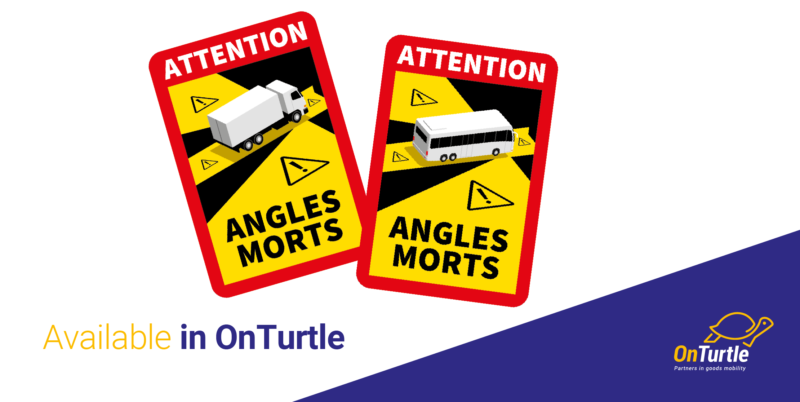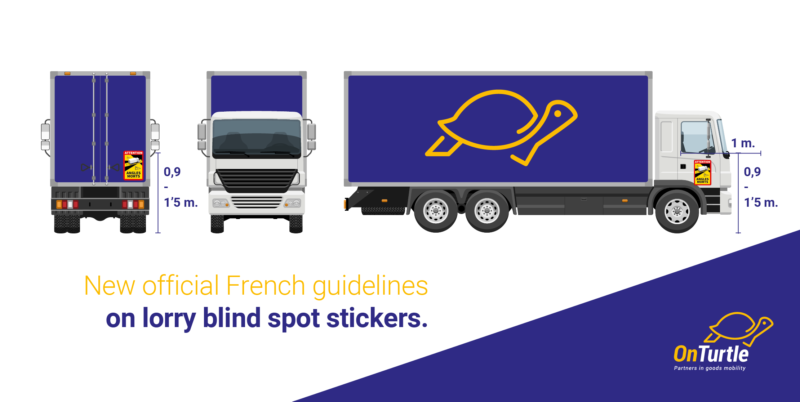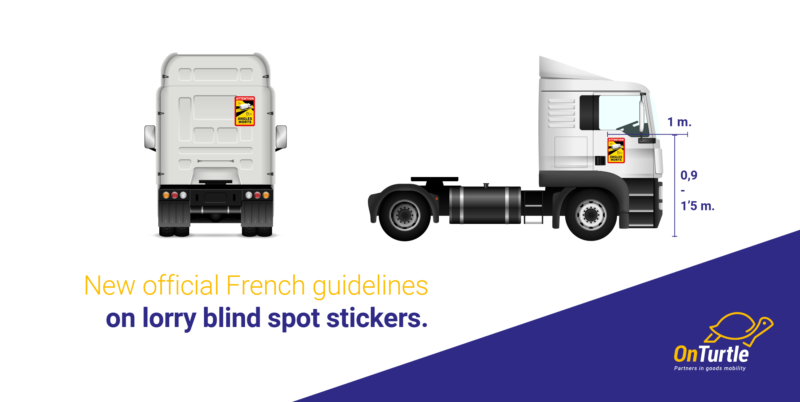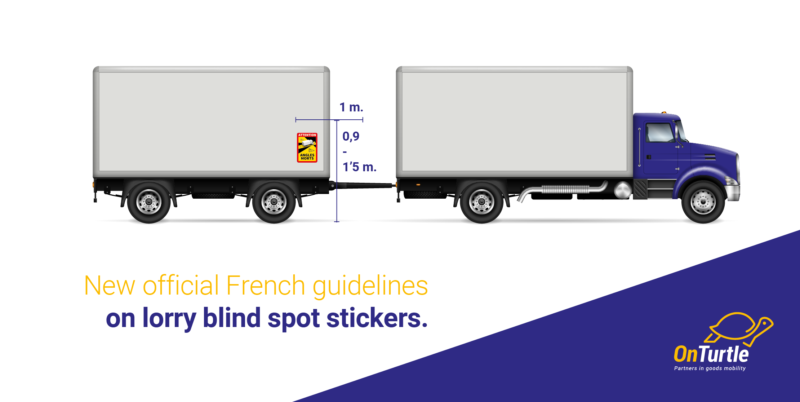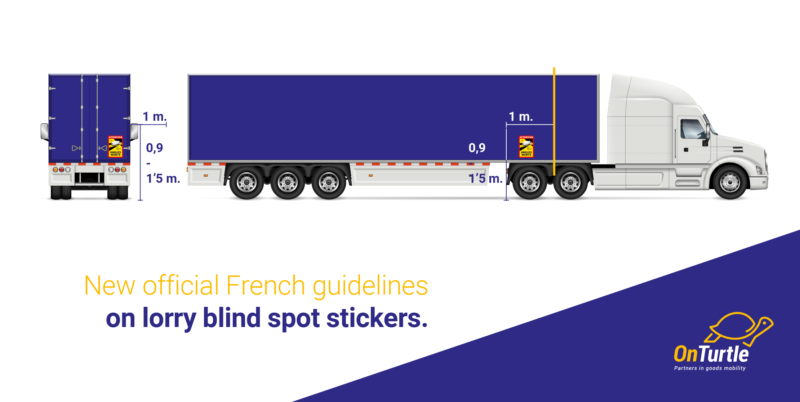As of 1 January, vehicles with a GVWR over 3.5 tonnes that travel along French highways are required to have a sign that indicates the blind spots. The measure is included in the Traffic Code and was approved together with Law 2019-1428 on 24 December 2019, on mobility guidelines.
With this reform, the French government aims to improve the safety of the most vulnerable users on public thoroughfares, which are not always aware of the areas that lack visibility on large vehicles. This fact ends up leading to preventable accidents.
We will explain the details of the regulations below.
Which vehicles must add the signs?
Those which have a GVWR over 3.5 tonnes, except:
- Agricultural and forestry vehicles.
- Winter services vehicles.
- Service vehicles that manage highways or motorways.
- Motor vehicles or trailers whose structure does not allow for the signalling elements to be placed in any of the established manners.
How can the signs be placed?
- By using glue.
- By using rivets.
- By using any other fastening system.
- By painting it on the bodywork.
Does the requirement affect vehicles from other countries?
Yes, although if the countries have an equivalent device, on both the sides of the vehicle as well as the rear part, recognised by another member state of the European Union, they do not need to adopt any additional measures.
What happens if the signs are not adapted to the model recognised by the French government?
If the signs are placed both on the sides as well as on the rear part of the vehicle before 31 March 2021, they shall be considered adequate for a 12-month period starting from the publication of the order in the official bulletin.
Where must the signs be placed?
On both sides and on the rear part of the vehicle, so that they are visible in any circumstance, without interfering with other regulatory plates and registrations, or the lights or signalling devices, and without impeding the driver’s field of vision.
Where should the signs be placed?
We have prepared different images for you that illustrate where the signs should be placed in a simple fashion.
- Trucks: the signs must be placed on the rear to the right, at a height between 0.9 and 1.5 metres from the ground; and on each side, at the same distance from the ground, within the first metre from the front part, without occupying glass surfaces.
- Tractors: the signs must occupy a position compatible with the vehicle’s technical characteristics on the rear part; and on each side, the specifications are the same as for trucks.
- Vehicles with trailer: on the trailer the marking must be placed in the same way as on trucks, taking into account that on the sides the signs must be placed within the first metre from the rear part of the bodywork. On semi-trailers, the first metre is measured from the hitch plate.
What are the exceptions to the positioning specifications?
Height requirements:
- When the signs cannot be placed at a height between 0.9 and 1.5 metres from the ground due to technical reasons, they must be placed as close as possible to the specified interval, without exceeding 2.1 metres.
Side positioning requirements:
- Vehicles with direct viewing systems in the lower part of the doors or with glass doors must place the signs respecting the distance specifications to the extent possible, without exceeding the 3 metres from the front part, unless the structure of the vehicle does not allow placement without obstructing part of the glass.
- The side sign placement criteria will not apply to the trailer vehicles for which it is technically impossible. In these cases, they will be placed in a position compatible with their technical characteristics.
Rear positioning requirements:
- The rear sign placement criteria will not apply to vehicles for which it is technically impossible. In these cases it must be placed in a position compatible with their technical characteristics.
- Some examples of these vehicles are: container carriers, vehicle carriers, tractors for semi-trailers, tanker vehicles, platform vehicles, Dollies.
What about vehicles equipped with sliding tarpaulins for side loading?
We recommend placing the signs using paint.
Are vehicles with a platform exempt from placing the marks?
No. Although technically they cannot be placed within the distance specifications established by the regulation, the signs must be placed in a position compatible with their technical characteristics, for example, by using a fixed or removable frame.
Where should Ampliroll vehicles place the signs?
On the vehicle yes, not on the bodywork.
And container vehicles?
On the vehicle yes, not on the container.
Where should the vehicles that transport cars place the signs?
In a position compatible with their technical characteristics.
And lumber transport vehicles?
These vehicles are exempt from placing the signs, as they are among the vehicles in which the structure does not allow for the signs to be placed.
We here at OnTurtle are aware that many of our customers need to comply with this new regulation, that’s why we have prepared signalling stickers certified in accordance with the French regulation which can therefore be used to drive in city surroundings. If you have any doubts or queries please contact our customer service professionals at customerservice@onturtle.eu.

